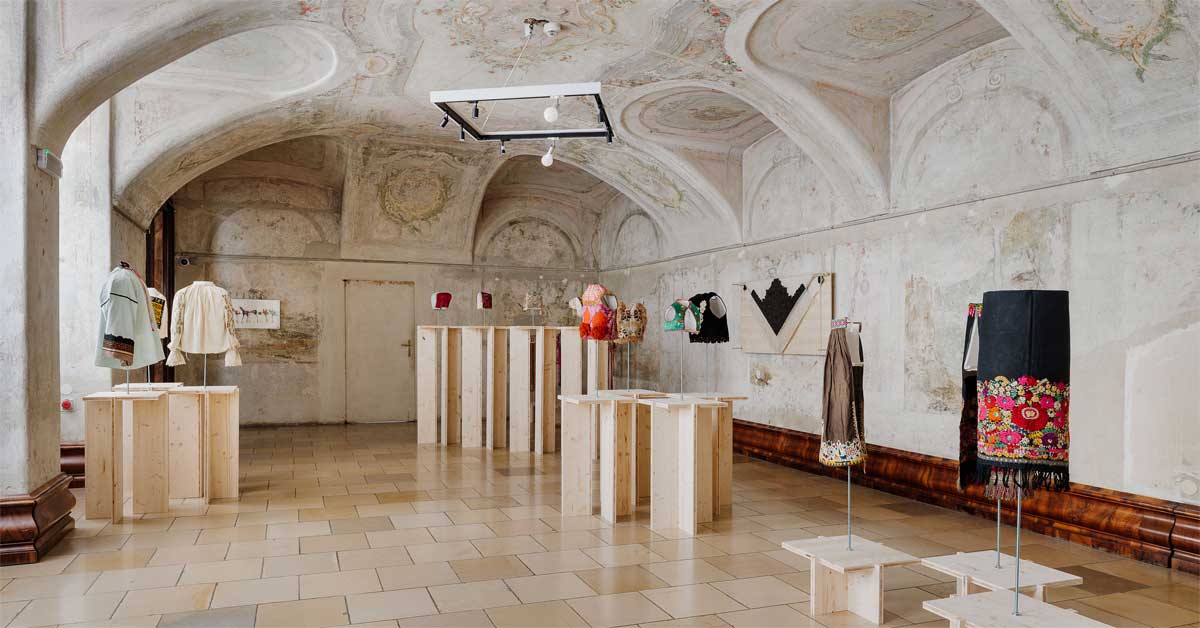

1 May 2025  A Source of Inspiration for Fashion, Design and Cultural ResearchThe Kunstsammlung und Archiv of the University of Applied Arts Vienna is more than a repository of historical artifacts—it is a living interface between past and present artistic practice. Through its diverse collections, it offers researchers, students, and the public access to material testimonies of design history, teaching legacies, and artistic movements that have shaped applied arts in Austria and beyond. Within this context, the Sammlung Mode und Textil (Fashion and Textile Collection) plays a particularly vital role. It houses around 8,000 objects including garments, fabric samples, and textile fragments, some dating back to the 17th century. These materials not only serve as design references but also document the cultural, social, and technical development of textiles. The collection highlights the interweaving of global influences and local traditions, providing a crucial foundation for contextualizing both historical and contemporary textile work.Spotlight on Two Textile Pioneers: Rothansl and Stoisavljevic-RollerOpening today at the Universitätsgalerie der Angewandten in the atmospheric Heiligenkreuzerhof, the exhibition Textile Transfers brings long-hidden treasures from this archive to light. At its heart are the lives and legacies of two artists and educators: Rosalia Rothansl (1870–1945) and Mileva Stoisavljevic-Roller (1886–1949). Their work and collections represent a key moment in the history of women's professionalization in the arts and reflect a broader modernist rethinking of textile practices in the early 20th century.Rothansl, one of the first women in Europe to be appointed as a professor, mentored significant figures such as Friedl Dicker-Brandeis and Vally Wieselthier. Her pedagogy emphasized the value of hand-crafted textile techniques, which she documented and taught through a remarkable collection of rural garments and fragments from regions like Bohemia, Dalmatia, and even South and East Asia. Stoisavljevic-Roller, educated at the same Kunstgewerbeschule, was known for her graphic and enamel work and her ties to the Secession movement. Her own textile collection was photographed and staged as part of a broader reform dress movement linked to the avant-garde circle around Gustav Klimt. These garments, often designed as symbols of emancipation, illustrate how textiles became mediums for both aesthetic innovation and social commentary. Context Creates Meaning: From Archive to Exhibition NarrativeThe curatorial team, led by Eva Klimpel and Stefanie Kitzberger under the direction of Cosima Rainer, has crafted an exhibition that does more than display objects. Textile Transfers tells a story—about education, identity, and the artistic transmission of knowledge through fabric. It weaves together historical photos, student works, and cultural references to reveal how Rothansl and Stoisavljevic-Roller shaped artistic approaches to textiles in ways that still resonate today.Many of Vienna's cultural gems are tucked away in archives and collections, unseen by the wider public. But thanks to dedicated research and curatorial vision, these treasures come to life and take on new relevance. In the case of Textile Transfers, the legacy of two influential women is not only made visible—it is set into context, allowing us to understand how artistic lineages are built and why narrative is as essential as the artifact itself. Image: Exhibition view of 'Textile Transfers' at the Universitätsgalerie der Angewandten im Heiligenkreuzerhof in Vienna's 1st district. The display features carefully arranged historical garments and textile fragments from the Kunstsammlung und Archiv. The exhibition is on view from May 1 to July 15, 2025. Photo: Manuel Lopez Carreon, kunst-dokumentation.com. |